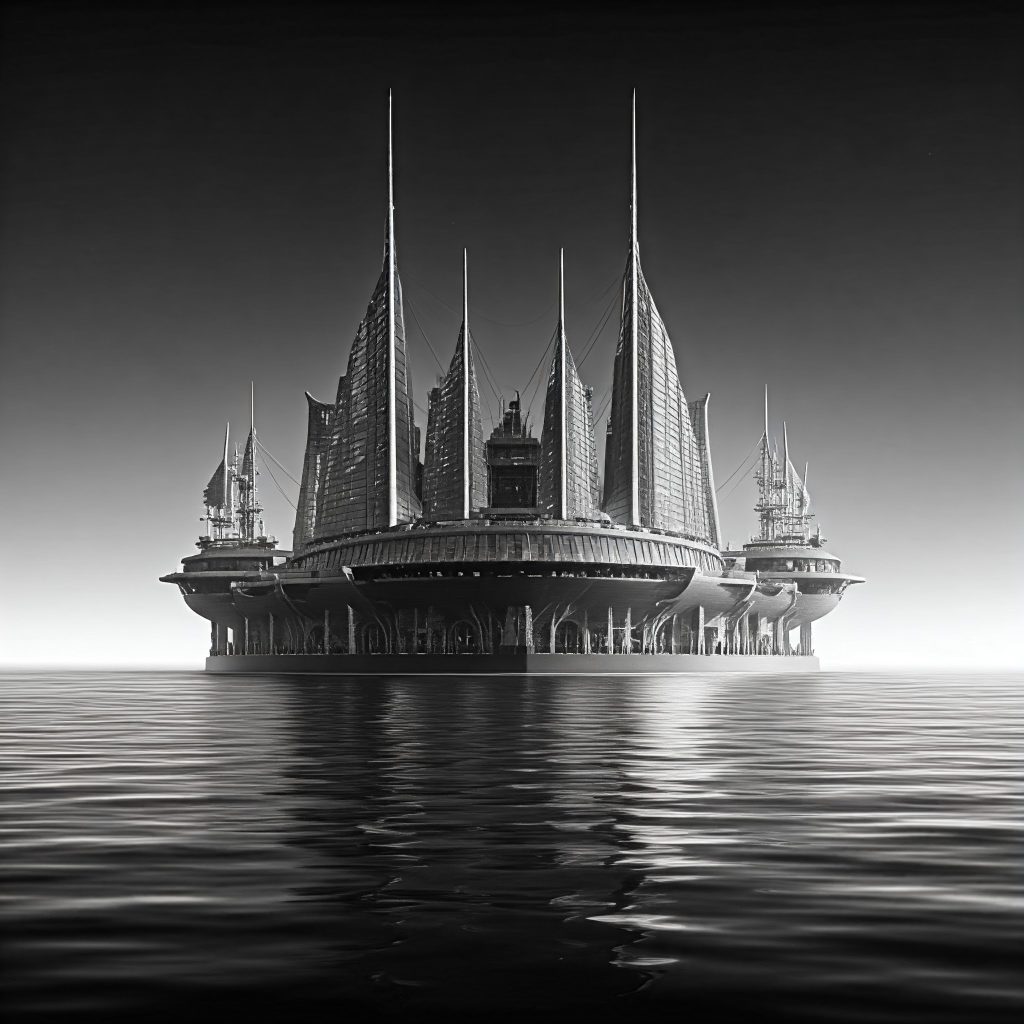Floating Cities: A Vision of Resilience and Sustainability
The storm raged fiercely as Will Hunter clung to the railing of the boat, his heart racing. Waves crashed against the hull, and flashes of lightning illuminated the horizon. Suddenly, a break in the storm revealed something extraordinary: a vast floating city shimmering like a mirage under the storm-lit sky.
.
“Hold tight, we’re almost there!” shouted the captain over the wind. Will’s mind raced as the boat surged toward the futuristic settlement. Oceanix City had always been a subject of fascination for him, but seeing it emerge from the storm felt surreal. Designed by visionary architect Bjarke Ingels in collaboration with the United Nations, the city promised resilience amidst the rising tides of climate change.
.
As they docked, the storm subsided, leaving a tranquil expanse of interconnected hexagonal platforms floating atop the ocean. These platforms, brimming with life, showcased the potential of floating cities—a daring solution to humanity’s most pressing environmental challenges.
Floating Cities: A Vision of Resilience and Sustainability
Will stepped onto the platform, greeted by a guide who introduced him to the city’s core principles: sustainability, adaptability, and resilience. “Oceanix City is not just a concept; it’s a model for survival,” the guide explained. “We’ve designed it to withstand storms, produce its own energy, and foster community.”
.
Each platform, constructed from marine-grade concrete, housed solar panels, wind turbines, and vertical farms. These elements worked in harmony to create a self-sustaining ecosystem. The guide led Will to a bustling market where residents traded fresh produce grown within the city. “We’re not just floating on water,” a resident told Will. “We’re thriving with it.”
.
The scene reminded Will of Design with Nature by Ian McHarg, a seminal book that emphasized working alongside natural systems rather than against them. The floating city embodied this philosophy, demonstrating how thoughtful design could harmonize with the environment.
The Hidden Depths of Oceanix City
As they ventured further, the guide revealed a research lab hidden beneath one of the platforms. Inside, scientists were monitoring marine ecosystems and testing the environmental impact of floating cities.
“Not everyone supports this project,” the guide admitted. “Critics worry about the potential disruption to marine life. That’s why we’re studying the long-term effects.”
.
Will examined the data displays, fascinated by the complexity of the challenges. The city wasn’t just an architectural marvel; it was an ongoing experiment in coexistence. The guide handed him a copy of The Future of Architecture in 100 Buildings by Marc Kushner. “This book captures the spirit of innovation driving projects like ours,” she said.
A Race Against the Rising Tide
As dusk fell, alarms blared across the city. “A storm surge is approaching,” the guide warned. Will joined a team rushing to secure the city’s systems. The floating platforms were designed to adapt to rising water levels, but this would be a true test of their resilience.
.
In the control room, Will watched as engineers adjusted the buoyancy mechanisms, ensuring the platforms stayed level. “The city’s modular design allows it to flex with the ocean,” one engineer explained. Will marveled at the ingenuity, but the tension was palpable as waves began to crest around the edges.
.
Through the chaos, Will’s architectural training surfaced. He suggested redistributing weight across interconnected platforms to stabilize the city—a solution that worked just in time. The storm passed, leaving the city intact and its inhabitants relieved.
Reflections at Dawn
As the sun rose, painting the ocean in hues of gold and blue, Will stood on the edge of the city, reflecting on what he had experienced. Oceanix City wasn’t perfect, but it was a step toward addressing the existential threats facing coastal communities worldwide.
.
The storm had tested the city’s resilience, proving that floating cities could weather both environmental and societal challenges. Yet, it also underscored the need for continued innovation and collaboration to refine the concept.
.
Awakening from his vivid dream, Will found himself back in his Iowa dorm room, the echoes of Oceanix City lingering in his mind. He resolved to pursue designs that harmonized with nature, inspired by the lessons of his dream voyage.
Learning Points
- Floating cities offer a practical response to rising sea levels and climate change.
- Modular design ensures adaptability and resilience in urban planning.
- Integrating renewable energy sources creates self-sustaining ecosystems.
- Balancing human needs with environmental preservation is crucial for success.
- Collaboration between architects, scientists, and communities drives innovation.
Keywords:
- Floating cities
- Oceanix City design
- Bjarke Ingels architecture
- Sustainable urban design
- Modular city platforms
- Marine-grade concrete structures
- Climate change urban solutions
- Vertical farming in cities
- Resilient architectural systems
- Self-sustaining urban ecosystems
This fictional story is set within the dreams of Will Hunter, a character created to explore the intersection of imagination and design. Dive into his dreamscape and discover how storytelling can illuminate real-world lessons in architecture and creativity.
Some of the links on this website may be affiliate links. This means that if you click on the link and make a purchase, we may receive a small commission. We only recommend products and services that we genuinely believe will be beneficial to our readers.



